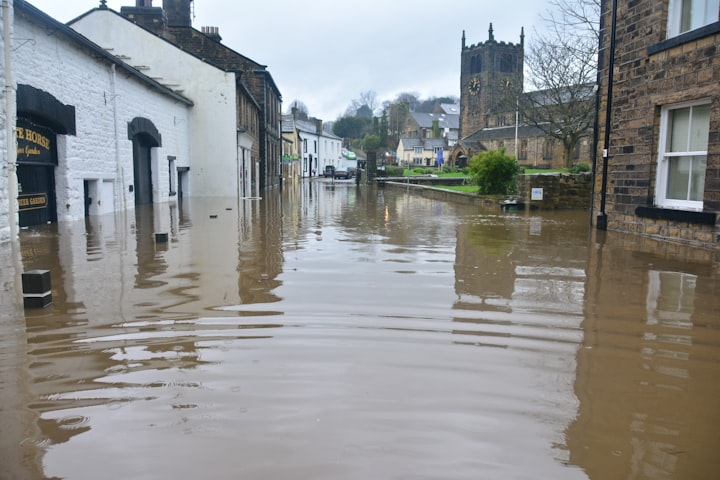HIMALAYAS: THE THIRD POLE
Himalayas and global warming!

THE ENDANGERED ASIAN MOUNTAINS
Stretched across eight countries – India, China, Myanmar, Pakistan, Afghanistan, Bhutan, Nepal and Bangladesh, lies the ‘Third Pole’ of the globe. Running 2400 km long, 8848 m in height, THE GREAT HIMALAYAS , are young fold mountains formed due to collision of Eurasian and Indian tectonic plates, and are still growing. Commonly known as ‘the abode of snow’ or ‘water tower of Asia’ -the Himalayas is mostly situated in northeastern part of the Indian subcontinent, being a valuable habitat for over 2 million people.
Lately it has caught world’s attention, because of glacier meltdowns. Like the rest of the regions , Himalayas are no prone to global warming and over heating . But what makes it a hot issue is that the side effects caused are huge, destroying mankind. Himalayas serve as a home to 2 million people as well as a source of livelihood . It has great potential for hydroelectric power plants. It is highly important for Indian subcontinent , as it acts a defense border, protecting it from cold Siberian gales, and summer monsoon winds, making it responsible for precipitation in northern India. The huge mountain ranges itself supports agriculture ,and is origin of many Indian rivers , perennial in nature like – Ganges, Sutlej, Beas, Chenab, Indus, Brahmaputra aka Yarlung Tsangpo in Tibet . No wonder the Himalayas plays a very crucial role for India.
What’s concerning topic is the rising warming of these glaciers leading to flash floods, deluges and sometimes even cloud bursts. David Moldem, director of The International Centre for Integrated Mountain Development, says that if the current scenario is promoted one third or 33% of the Himalayas will disappear, or melted down, and further more , even worse by the end of the 21st century, glaciers will disappear completely. Future generations would only read about them in books, if they would still be printing. Scientists are absolutely sure that the current climatic changes are caused due to culminated activities of both human beings and global warming.
Paris agreement- a climate change treaty within the UN Framework Convention on Climate mitigation, adaptation, and finance was signed by 195 members in 2016. It’s primary goal is to limit the global warming at 1.5 C, avoiding and taking measures to prevent the rise in temperature by 2 C. Despite all attempts by the end of century temperature rise would be about 3 C. Thus immediate and effective steps are needed to be taken both at global and national level, by government and by civilians.
The effects of global warming are clearly visible in the Himalayan states, especially in the upper regions- facing devastating floods, landslides and glacial lake outbursts. It is already in notice that permafrost has begun to melt down and mountains are retreating at a rapid rate after 1975s.
In the Indian subcontinent 13 states out of 28 in total, form part of Himalayan states. These are- Jammu and Kashmir, Ladakh, Uttarakhand, Himachal Pradesh, Arunachal Pradesh, Manipur, Meghalaya, Mizoram, Nagaland ,Sikkim, Tripura, Assam, and west Bengal. Amongst these states Uttarakhand has been subject to massive destructive floods several times, along with Assam, and Himachal Pradesh.
Talking about the most recent flood which hit uttarakhand on 7th February, 2021-the situation went beyond control, giving chills to whosoever heard about it. The disaster stuck uttarakhand’s chamoli district fiercely. Researchers have explained that an avalanche caused the disaster after a portion of the Nanda Devi glacier broke off, around 10:45 am, flooding the tributaries of Ganga- Dhauli ganga, rishi ganga and alaknanda. Dab Shugar, associate professor of department of geosciences at Canada’s University of Calgary tweets suggesting a portion of glacier may have fallen after it was struck by a massive rockslide.
The horrible flood rushed down the upper uttarakhand regions , destroying most houses, and the umdamaged ones were covered in slush 20 ft deep. 72 people were confirmed reported as dead, while 170 went missing . The report from daily mail- The Hindu states that the flood extensively damaged two major hydropower projects- Rishi ganga hydel project and National Thermal Power Corporation Limited’s Tapovan – vishnugad hydel project.
Joint teams consisting about 1000 officials both from State and central government looked into the matter. Numerous missing people were struck in Tapovan hydel project tunnel. The state government released many sort of relief packages to compensate the hazard caused .But the question here arises is this permanent solution for the destruction caused?
This is the second time uttarakhand faced such a terrible incident in a decade . Whole world is familiar with the 2013 Kedarnath flood, destroying 150 bridges, 1300 roads, 2000 homes and leaving 700 people dead[ data from indiatoday] . Clearly no lesson was learned by the authorities, no amendments were made. Hindu kush Himalayan region has over 8000 glacial lakes, and 200 has been declared dangerous . The site of calamity- uttarakhand alone has 1000 glacials. Still no heed has been given at a national level or by international organization like UNDP. The disaster caused in February , exposed the vulnerability of the region, and increased climatic change, effecting the region.
A report by the UN’s Intergovernmental Panel on climate change [IPCC] has warned that temperature in these regions has been rising lately. Appropriate range is -20 C to -6 C while it’s current measure shows it has risen to -2 C , making the ice highly vulnerable to melting. Despite the warnings and minor or major damages caused, no strict action has been taken.
What makes the situation overall more ironical is the region does not support installation of hydro power plants environmentally, or geologically, but still the steps were taken and machinery installed. The residents too opposed the decision, filing a public interest litigation in 2019 summer.
Another infrastructural project which aggravated the calamity was the char dham project, joining Kedarnath, Badrinath, Gangotri, and Yamunotri. The National Green Tribunal urged to keep the width not more than 5.5 meters, but the plea was totally ignored. The project has cut down maxim slope in the shortest possible time, ignoring the dangerous geological features of the surrounding, and has triggered many landslides.
Hindu Kush Himalayan region is under a 71 percent forest coverage. The region is extremely sensitive to natural disasters caused because of man-made developments . It is need of the hour to look into the matter and adopt preventive measures. Urbanization is important but should not cost lives of people. Sustainable development is the key.
Increased tourism in the region also gives incentive to the localites and authorities to exploit the resources of the region, for making petty profits. Private projects are equally taking advantage , benefitting themselves upto the most. Remember the region is a habitat for a vast population thriving on the resources provided by the mountains, using it’s water, cultivating on its land, grazing their animals on the green grass stretches. These people also somewhere are exploiting the mountains though on a very minute scale.
Melting glacier, landslides, deluges, floods, glacial lake outburst, are all caused due to global warming accompanied by the activities of humans. The Himalayan region is responding to global warming by retreating slopes and melting of permafrost. We have enough of reports and researches but no major action plan. If the current situation is enhanced be ready to bid the youngest fold mountains an early farewell , by the end of this century.






Comments
There are no comments for this story
Be the first to respond and start the conversation.